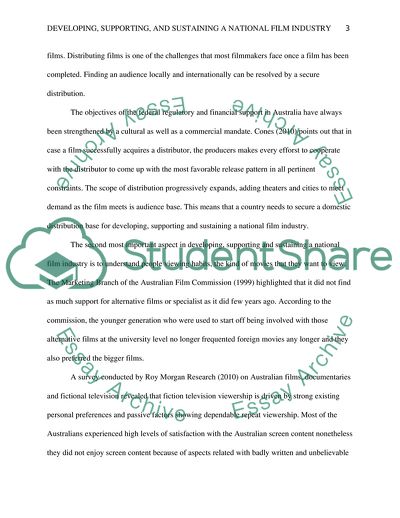Cite this document
(Developing, Supporting, and Sustaining a National Film Industry Essay - 1, n.d.)
Developing, Supporting, and Sustaining a National Film Industry Essay - 1. https://studentshare.org/visual-arts-film-studies/1759738-australian-national-cinema-is-primarily-government-supported-with-limited-infrastructure-and-with-a-small-population-discuss-key-debates-on-the-issue-of-developing-supporting-and-sustaining-a-national-film-industry
Developing, Supporting, and Sustaining a National Film Industry Essay - 1. https://studentshare.org/visual-arts-film-studies/1759738-australian-national-cinema-is-primarily-government-supported-with-limited-infrastructure-and-with-a-small-population-discuss-key-debates-on-the-issue-of-developing-supporting-and-sustaining-a-national-film-industry
(Developing, Supporting, and Sustaining a National Film Industry Essay - 1)
Developing, Supporting, and Sustaining a National Film Industry Essay - 1. https://studentshare.org/visual-arts-film-studies/1759738-australian-national-cinema-is-primarily-government-supported-with-limited-infrastructure-and-with-a-small-population-discuss-key-debates-on-the-issue-of-developing-supporting-and-sustaining-a-national-film-industry.
Developing, Supporting, and Sustaining a National Film Industry Essay - 1. https://studentshare.org/visual-arts-film-studies/1759738-australian-national-cinema-is-primarily-government-supported-with-limited-infrastructure-and-with-a-small-population-discuss-key-debates-on-the-issue-of-developing-supporting-and-sustaining-a-national-film-industry.
“Developing, Supporting, and Sustaining a National Film Industry Essay - 1”. https://studentshare.org/visual-arts-film-studies/1759738-australian-national-cinema-is-primarily-government-supported-with-limited-infrastructure-and-with-a-small-population-discuss-key-debates-on-the-issue-of-developing-supporting-and-sustaining-a-national-film-industry.


